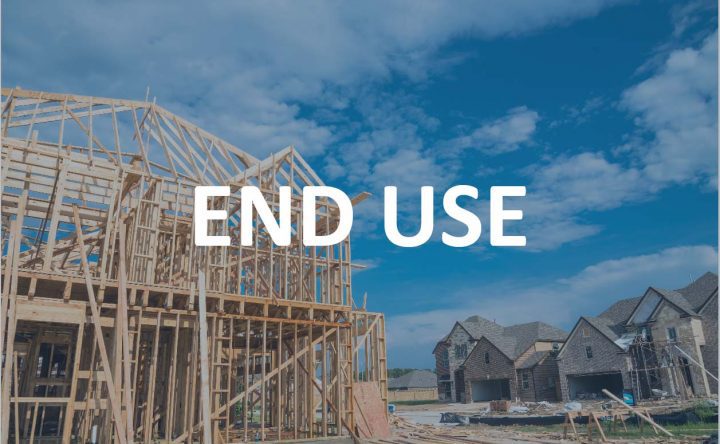According to a report released today (1-31-22) by Redfin, the Seattle-based, technology-powered real estate brokerage, more than one-third (34.1%) of U.S. single-family home sales in December were for new construction. This is the highest share on record and 8.7% above December 2020 reading of 25.4%. Newly built homes have taken up an increasing portion of U.S. housing inventory over the last 10 years, with a major acceleration in mid-2020 after the pandemic began.
News in end use
Canadian Industrial Product Price Index Moves Higher in December on Softwood Lumber Gains
Statistics Canada (StatsCan) reported today (1-31-22) that prices of products manufactured in Canada, as measured by the Industrial Product Price Index (IPPI), rose 0.7% on a monthly basis in December and were up 16.1% year-over-year. Prices of raw materials purchased by manufacturers operating in Canada, as measured by the Raw Materials Price Index (RMPI), fell -2.9% month-over-month in December but increased 29.0% year-over-year.
Home Buyers’ Expectations of Affordability Declined Throughout All of 2021
The latest Housing Trend Report (HTR), released for Q4 2022, shows that home buyers’ expectations for affordability declined throughout 2021. In Q4, the share of buyers who could afford less than half the homes available in their market was at 76%. In the Q4 of 2020, it was 63%. It increased to 65% in Q1 of 2021, rose again in Q2 to 71%, and then moved higher in Q3 to 73%.
Built-to-Rent Home Market Expected to Soar to New Heights in 2022
According to Yardi Matrix — the Santa Barbara, California-based provider of research and reports on multifamily, student housing, office, industrial, and self-storage properties across the U.S. — 6,740 new built-to-rent homes were completed in 2021. This is the highest yearly total to date on record. Other industry sources, including a new RentCafe study indicate that the trend is just beginning and growing at a significant pace.
Buyers’ Perceptions of Housing Inventory Availability and the Buying Process Becoming Easier Declined Throughout 2021
A deeper dive into the National Association of Home Builders’ (NAHB) Housing Trends Report (HTR) for Q4 2021 reveals that buyers’ perception of housing inventory availability, and their expectations of the home buying search process becoming easier in the months ahead, declined throughout the year. All regions showed a decline in buyers’ perceptions of inventory during 2021.
Personal and Disposable Income Increased but Personal Consumption Expenditures Declined in December 2021
The U.S. Bureau of Economic Analysis (BEA) reported on Friday (1-28-22) that, according to their estimates, personal income (PI) increased $70.7 billion (0.3%) in December. Disposable personal income (DPI) increased $39. billion (0.2%) in December. Personal consumption expenditures (PCE) decreased $95.2 billion (0.6%) in December.
University of Michigan Final Consumer Sentiment Index Down for January 2022
The University of Michigan today (1-28-22) released its final Consumer Sentiment Index (CSI) for January. The CSI declined to a reading of 67.2 in January, down from 70.6 in December. This is a month-over-month decrease of -4.8% and is down -14.9% year-over-year (79.0 in January 2021).
State Employment and Unemployment Statistics Released for December 2021
The U.S. Bureau of Labor Statistics (BLS) has reported state employment and unemployment rates for December 2021. According to the BLS, nonfarm payroll employment increased in 17 states and was essentially unchanged in 33 states and the District of Columbia in December 2021. Over the year, 48 states and the District of Columbia added nonfarm payroll jobs and 2 states were essentially unchanged.
Pending Home Sales Slip for Second Consecutive Month in December
The National Association of Realtors® (NAR) reported on Thursday (1-27-22) that their Pending Homes Sales Index (PHSI), which is based on signed real estate contracts, not actual closings, for existing single-family homes, condominiums, and co-ops, declined -3.8% in December to a reading of 117.7. Year-over-year contract signings have also declined -6.9%. The December decline marks the second consecutive monthly drop-in activity.
Housing Continues to Have Positive Impact on GDP in Q4 2021
A closer look at the Bureau of Economic Analysis (BEA) “advance” estimate of Q4 GDP, with a specific look as to how housing impacted the results and analysis provided by the National Association of Home Builders (NAHB), reveals that the surge in residential investment in 2020, and its continued strength in 2021, allowed housing to remain an elevated component of the GDP — especially when compared to most of the post-Great Recession period.



